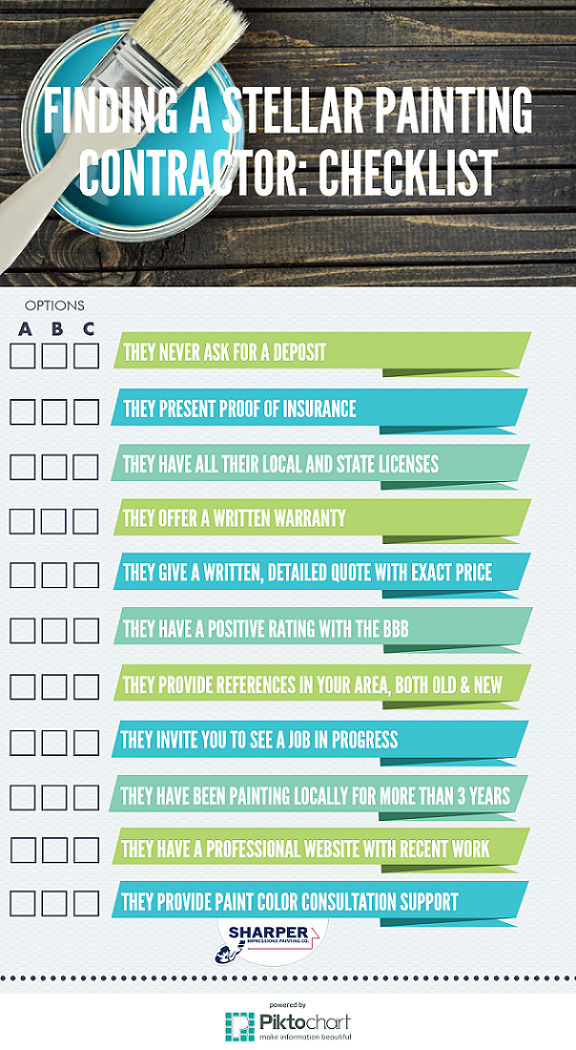Discover The Effect Of Weather Conditions On Your External Paint Task For A Perfect Finish
Discover The Effect Of Weather Conditions On Your External Paint Task For A Perfect Finish
Blog Article
Write-Up Author-Greenwood Pedersen
Understanding exactly how weather conditions can affect the end result of an external paint venture is critical for achieving a flawless finish. From temperature level variations modifying paint bond to moisture levels influencing drying out times, each component of climate plays a substantial duty in the success of your task. Additionally, wind rate and precipitation can introduce unanticipated difficulties that might jeopardize the quality of the result. As we navigate via the subtleties of weather's impact on external paint, it comes to be apparent that precise planning and tactical timing are crucial for making certain a specialist and resilient end result.
Perfect Temperature Range for Painting
When considering outside paint projects, the optimal temperature level variety plays an essential function in attaining optimal outcomes. Paint in the right temperature level problems guarantees that the paint sticks effectively to the surface area, dries evenly, and remedies efficiently. Usually, the recommended temperature level variety for external paint is between 50 to 85 degrees Fahrenheit.
Paint in temperature levels below 50 degrees Fahrenheit can cause issues such as bad paint adhesion, long term drying out times, and a boosted possibility of breaking or peeling.
On the other hand, painting in temperature levels over 85 levels Fahrenheit can cause the paint to completely dry as well swiftly, resulting in blistering, gurgling, and an uneven coating.
To attain the best outcomes, it is essential to inspect the weather prediction prior to starting an exterior paint task. Preferably, purpose to paint throughout moderate climate condition with modest temperature levels and reduced humidity levels.
Impacts of Moisture on Paint Drying
Humidity degrees dramatically affect the drying process of paint applied to exterior surface areas. High humidity can prolong the drying time of paint, bring about prospective concerns such as trickling, streaking, and even the formation of bubbles on the painted surface. Excess dampness in the air slows down the evaporation of water from the paint, impeding the curing procedure. This is particularly problematic for water-based paints, as they count on dissipation for drying out.
On Click Webpage , low humidity levels can additionally affect paint drying out. Exceptionally Learn Even more may cause the paint to dry too swiftly, bring about bad bond and a rough finish. In such instances, adding a paint conditioner or spraying a great mist of water airborne can help manage humidity degrees and improve the paint outcome.
To ensure optimal drying conditions, it is recommended to repaint when the humidity degrees range between 40% and 50%.
Surveillance humidity levels and taking proper procedures can help accomplish a smooth and long lasting paint coating on exterior surfaces.
Wind and Rainfall Considerations
Wind rate and rainfall are essential factors that dramatically influence the success of an external painting task.
When it concerns wind, both rate and instructions are necessary factors to consider. High wind rates can create paint to dry also promptly, causing a poor finish with prospective concerns like breaking or uneven structure. Furthermore, wind can carry particles that may comply with the damp paint, causing blemishes. Therefore, painters ought to aim to service days with light to moderate winds for ideal paint conditions.
On the other hand, rainfall, whether rain or snow, can be exceptionally harmful to the outcome of an outside paint job. Wetness from rainfall can impede paint bond, triggering peeling off and bubbling over time. It is critical to stay clear of paint throughout stormy or snowy climate to guarantee the long life and high quality of the paint job. Painters must also enable enough time for the surface to completely dry completely after any rainfall prior to commencing or resuming the paint procedure.
Conclusion
Finally, weather conditions play a substantial duty in the end result of an outside painting task. The optimal temperature level range, humidity levels, wind rate, and precipitation all add to the success or failure of the paint job.
It is vital to consider these aspects and strategy as necessary to ensure appropriate paint adhesion, drying out times, and general quality of the ended up item.
